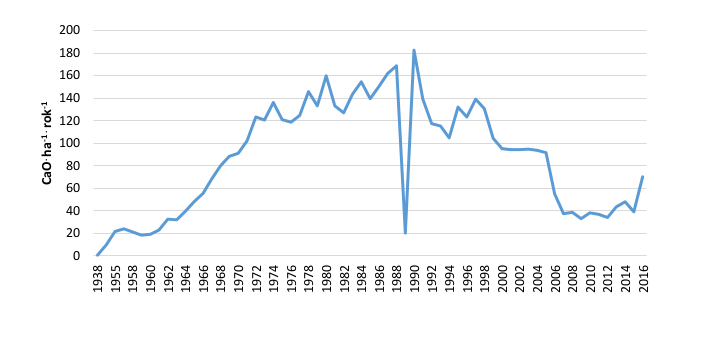The need to regulate the pH of the soil, which translates into the improvement of soil properties (agromelioration treatment), was identified at the beginning of the work of agricultural soil scientists, and yet the problem of soil acidification remains unsolved and is the cause of yield reduction, insufficient competitiveness of our farms, soil degradation and environmental pollution. The highest doses of calcium fertilizers in Poland were used in the seventies and eighties of the twentieth century, although even then they were lower than the fertilizer needs of liming specified for the agricultural production area of Poland. A significant regression of soil liming in Poland took place at the turn of the 1980s and 1990s, which was obviously related to the economic situation of the country during system transformations. In recent years, the average dose of lime amounted to approx. 36 kg CaO ha-1. Therefore, the consumption of calcium fertilizers is half lower compared to the last year before Poland’s accession to the European Union, when the purchase of lime was still subsidized (Figure 4).
The amount of calcium fertilizers that are currently used is not able to cover the loss of calcium carried out with the crop yield and losses due to leaching into the soil. Analyzing the data from the Central Statistical Office, it indicates that the consumption of calcium fertilizers is now almost 5 times lower than at the beginning of the nineties of the last century.



Fig. 5 Average consumption of fertilizing lime in 2012/2015 (kg / ha). Source: study based on GUS data (32) Ochal
In Poland, there is a noticeable differentiation in the consumption of agricultural lime. Significantly more lime than the average in Poland used in the province. Śląskie, Pomorskie, Wielkopolskie, Kujawsko-Pomorskie, Zachodniopomorskie, Dolnośląskie and Opolskie. In other provinces, the doses of lime are lower than the average in Poland (Figure 5).
